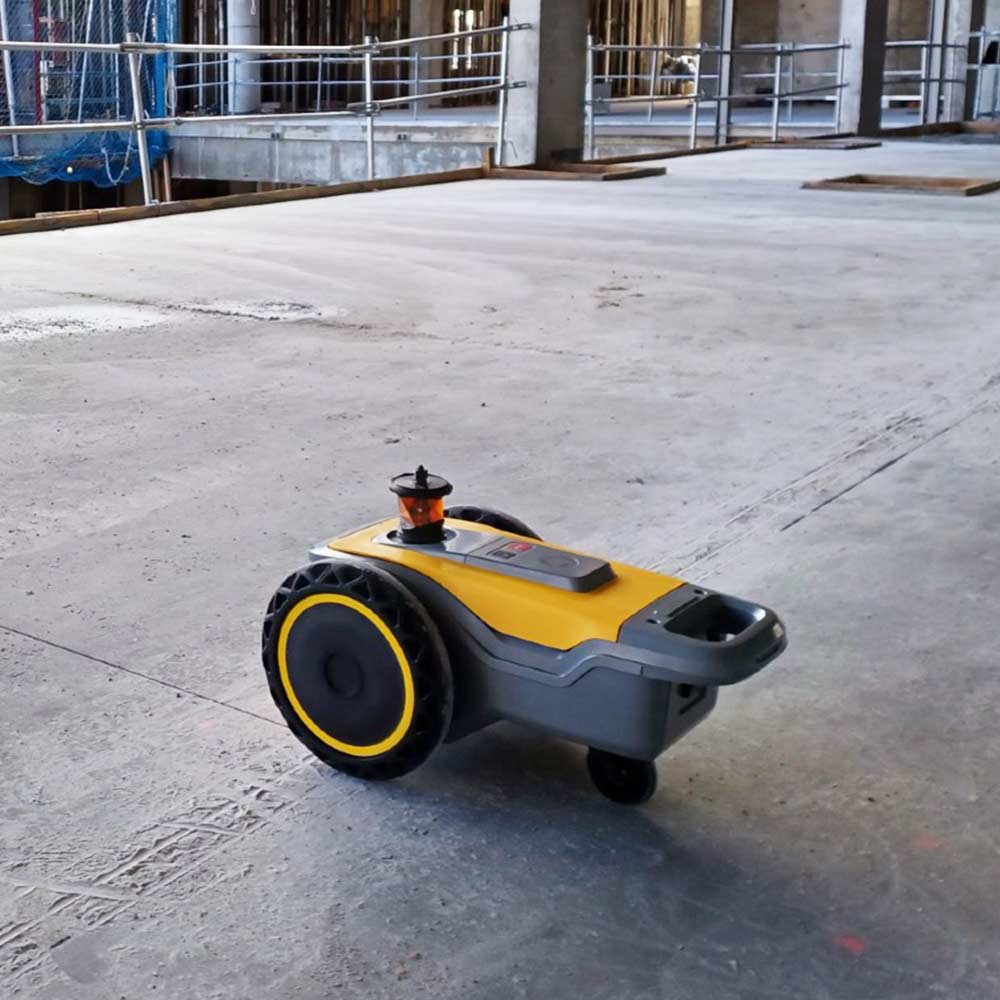Recently, we shared some of the latest developments in robotics applied to the construction sector. This sector is experiencing significant advancements, with many innovations expected to be implemented on a large scale soon.
One reason for this renewed momentum is the convergence of new technologies. Advances in machine vision, IoT technologies, low-latency 5G networks, advanced servo motors, and especially artificial intelligence are enabling the development and manufacturing of increasingly sophisticated and efficient construction robots.
Examples of robots in construction
Robotics is transforming job site operations in many ways. Here are some of the most remarkable recent examples:

1. Marking at the construction site:
- HP SitePrint at the Hospital Central do Alentejo. This robot significantly improves site layout efficiency by drawing lines and text directly on surfaces. It has increased the speed of partition installation, with layout marking six times faster than traditional methods, proving its effectiveness on large projects. ACCIONA is using the HP SitePrint robot in the construction of the Hospital Central do Alentejo in Évora, Portugal.
2. Automated masonry:
- SAM100 (Semi-Automated Mason). Automation in masonry allows robots to lay bricks efficiently, reducing the time and human effort required. SAM100 is a masonry robot that works alongside human masons to boost productivity. This robot can lay between two and four hundred bricks per hour, adjusting each brick precisely to ensure quality construction.
3. Site inspection and mapping:
- Spot by Boston Dynamics. Construction site inspection and mapping are essential for monitoring progress and detecting problems early. Spot, a quadruped robot from Boston Dynamics, is used to navigate difficult terrain and perform detailed inspections. Equipped with advanced cameras and sensors, Spot collects real-time data and provides an accurate view of the site’s condition, helping to identify potential hazards before they become major problems.
4. Tying of reinforcing bars:
- TyBot. Tying rebar is a repetitive and physically demanding task, ideal for automation. TyBot automates the process of tying rebar in the construction of bridges and other structures. This robot works continuously and accurately, increasing the speed of the process and reducing the physical workload of human operators.
5. Panel installation:
- HRP-5P. Drywall installation is a complex task requiring precision and dexterity. HRP-5P, a humanoid robot developed in Japan, performs these complex manual tasks using artificial intelligence and machine vision. This robot manipulates tools and materials with high precision, making it a valuable assistant in interior construction.
6.Inspection and monitoring of development:
- Inspection drones. Monitoring construction progress is key to keeping projects on budget and on schedule. Numerous companies use drones and ground vehicles to gather data on the ground. This equipment collects accurate data, which is then analyzed by artificial intelligence to evaluate progress and suggest possible adjustments.
7. Earth moving and excavation:
- Robotic excavators. Earthmoving and excavation tasks, essential in many construction projects, benefit greatly from automation. Autonomous excavator robots use GPS, LiDAR, and autonomous navigation software to perform these tasks accurately and efficiently. These robots can work continuously without human intervention, reducing the risks associated with heavy machinery use.
8. 3D printing of structures:
- 3D-printing robots. 3D printing in construction enables the creation of structures quickly and efficiently using materials such as concrete. ACCIONA is applying these technologies to print urban furniture, like benches, in a housing development in Seville.
Thanks to these construction robots, we can expect improved safety for operators and faster execution times for buildings and infrastructure projects. If you want to discover other technologies used in construction, such as wearables, and stay updated on the latest developments in sectors like renewable energy, subscribe to our newsletter at the bottom of this page.
Source:



